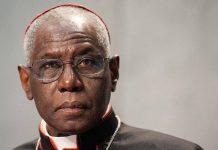On July 29, 2022, after meeting in private with members of the Society of Jesus and some indigenous groups, Pope Francis will leave Quebec city and fly to Iqaluit, Nunavut, to continue his “Walking Together” penitential pilgrimage.
Newsroom (29/07/2022 11:27 AM Gaudium Press) On Friday morning, the Holy Father will meet privately with members of the Society of Jesus (Jesuits) in Canada. The Holy Father being a Jesuit Priest, while on trips abroad, makes time to meet with members of his religious order, a sign of friendship, community, and prayerful support. The Society of Jesus is a religious order created in 1540 by St. Ignatius of Loyola. There are over 18,000 of them worldwide, making it one of the three largest orders in the Roman Catholic Church. In addition to taking the vows of poverty, chastity, and obedience like other Catholic religious, they also take a vow of their own: absolute obedience to the will of God and the Pope. Their motto is: For the greater glory of God.
The Holy Father will also meet privately with 22 First Nations survivors of Indian Residential Schools. There is to be a live telecast when the Pope arrives; however, the rest of the meeting is private and off camera. After this, the Pope will fly from Quebec City to Iqaluit, Nunavut. In his extensive papal travels, Pope Francis has never journeyed farther north than Iqaluit,
Iqaluit Nunavut
Iqaluit is the capital and largest city in Nunavut, Canada. The inhabitants of Iqaluit are called Iqalummiut (singular, Iqalummiuq), -miuq (pl. -miut) being a common suffix in Inuit languages to designate the inhabitants of a place. In May 2021, the city had a population of 7,429. 74.9% of the population practice some form of Christianity (Anglican is the most popular at 42.6 percent), and 22.9 percent of the population identify as having no religious affiliation.
In the local Inuit language, “Iqaluit” means “fish.” The name refers to a small village by the Koojesse Inlet in the 1940s, where many Inuit moved to work at constructing an American airbase.
There is not a single traffic light and no road nor rail links to the outside world. It only has ship connections to the rest of Canada for part of the year. Iqaluit has a local road system only stretching from the nearby community of Apex to the Sylvia Grinnell Territorial Park, 1 km (0.62 mi) west of town. Iqaluit has no public transportation, although there is a citywide taxi service. Iqaluit Public Transit used to offer bus service in the city, but the service was cancelled due to low ridership. Motor cars are increasing, causing occasional traffic jams known locally as “the rush minute.” However, the cost of shipping automobiles and the wear and tear of the harsh Arctic climate combined with its notoriously rough roadways means that snowmobiles remain the preferred form of personal transportation.
While in Iqaluit, it is rumoured that the Holy Father will not travel by the Fiat he has been using but by some local vehicle. Sadly as it is not snowing, the Pope won’t be ferried about on a snowmobile.
World War II resulted in an influx of non-Inuit to the area. In 1942, the United States built Frobisher Bay Air Base on a long-term lease from the Government of Canada to provide a stop-over and refuelling site for the short-range aircraft being ferried to Europe to support the war effort. Iqaluit’s first permanent resident was Nakasuk, an Inuk guide who helped United States Army Air Forces planners choose a site with a large flat area suitable for a landing strip. The wartime airstrip was known as Crystal Two, was part of the Crimson Route, and operates today as Iqaluit Airport.
Its lone Catholic church serves parishioners from five continents; more than 100 routinely fill the pews each Sunday.
Rev. Daniel Perreault, who oversees the parish of Our Lady of the Assumption Roman Catholic Church, said only a handful of his parishioners are Inuit. Most of the others hail from Africa, South America, Asia, and other faraway places, have no links to the past problems of the boarding schools, and would like to welcome Pope Francis joyously today.
But the region’s Inuit organizations want the visit to be focused on their community, said the priest. “They do not want it being an occasion of a Catholic feast.”
The landscape is icy for eight months of the year, and snowdrifts can be seen on the permafrost. Icebergs can be spotted further out in Frobisher Bay when it is not entirely frozen.
Iqaluit is on the border of two polar climate zones: arctic and subarctic. According to the Köppen classification, Iqaluit has a tundra climate. Lichens and mosses cover the ground throughout the summer. Due to the long and cold winters, there is little vegetation, limited to tundra. In January, the temperature occasionally drops below -35°C (-60°C with the wind factor from blizzards). Iqaluit’s lowest temperature ever recorded was -45.6°C on February 10, 1967.
However, royals have also been spotted among the Icebergs: Queen Elizabeth visited Iqaluit for two and a half hours in 2002, three years after Nunavut was carved out of the eastern portion of the Northwest Territories to become a territory of its own.
By Raju Hasmukh
(With files from Crux Now and AP)


































